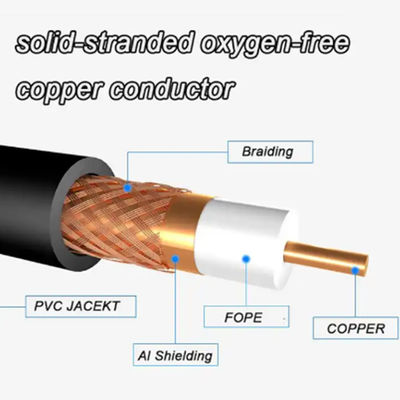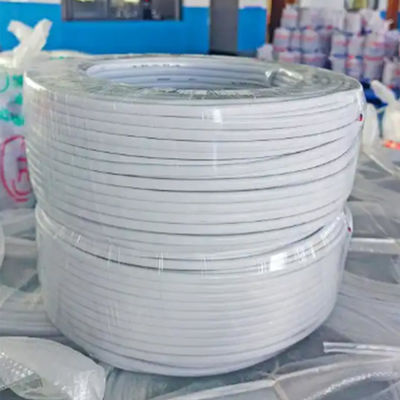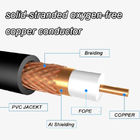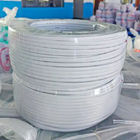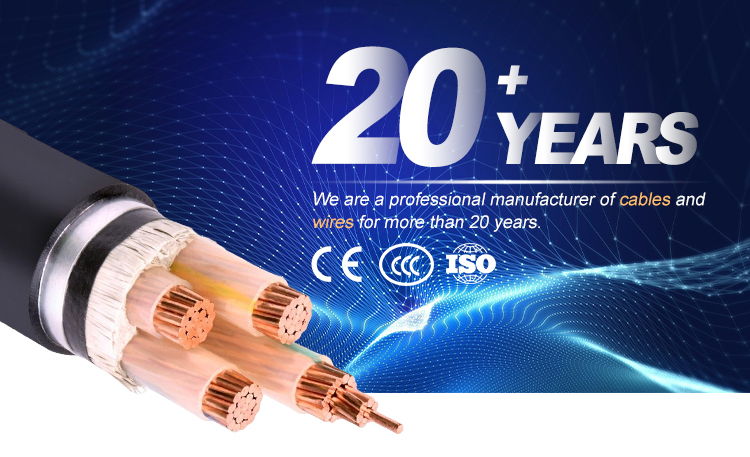-
Insulated Power Cable
-
Flexible Power Cable
-
Armoured Power Cable
-
Coaxial Power Cable
-
Solar Panel Power Cable
-
Electrical Building Wire
-
PVC Flat Cable
-
Bare Ethernet Cable
-
Fire Resistant Cables
-
Copper Clad Aluminum Wire
-
FTTH Fiber Optic Cable
-
Fiber Optic Patch Cord
-
Speaker Wire Cable
-
Mineral Insulated Cable
-
Bare Conductor Cable
-
 RoseThis mutual cooperation last for about 4 years,and must admit the service they provide is aboved expected. Our cooperation will last for many years.
RoseThis mutual cooperation last for about 4 years,and must admit the service they provide is aboved expected. Our cooperation will last for many years.
Satellite Antenna Network Coaxial Cable RG179 RG213 50 Ohm Coaxial Cable
| Place of Origin | Jiangsu China |
|---|---|
| Brand Name | Jiangnan |
| Certification | CE, RoHS, CCC,ISO |
| Model Number | RG6、RG11、RG58、RG59、RG179、RG213 |
| Minimum Order Quantity | 1 Roll |
| Price | $0.01 - $3.00/ meter |
| Packaging Details | Customized logo(Min. order 10000 meters) Customized packaging(Min. order 10000 meters) Graphic customization(Min. order 10000 meters) |
| Supply Ability | 50000meters/7days |

Contact me for free samples and coupons.
WhatsApp:0086 18588475571
Wechat: 0086 18588475571
Skype: sales10@aixton.com
If you have any concern, we provide 24-hour online help.
x| Model Number | RG6, RG11, RG58, RG59, RG179, RG213 | Application | Cable Television Transmission, Long-distance Telephone Transmission |
|---|---|---|---|
| Conductor Type | Stranded/solid | Type | Coxial Cable |
| Conductor Material | CU/AL/CCS/CCA/TCW | Insulation Material | FPE/PE |
| Standard | EN 50117-1 | Custom Processing | Yes |
| Highlight | Network Coaxial Cable RG179,RG213 50 Ohm Coaxial Cable,Satellite Antenna Network Coaxial Cable |
||
Satellite Antenna Network Coaxial Cable RG179, RG213
Main category
Coaxial cables can be divided into two basic types, baseband coaxial cables and broadband coaxial cables.
Baseband coaxial cable
The shielding layer of the baseband coaxial cable is usually a mesh structure made of copper, and its characteristic impedance is 50Ω. The cable is used to transmit digital signals, and the commonly used models generally include RG-8 (thick cable) and RG-58 (thin cable). The most intuitive difference between a thick cable and a thin cable is that the cable diameter is different. Thick cable is suitable for relatively large local networks. It has a long standard distance and high reliability; however, transceivers and transceiver cables must be installed in thick cable networks, and installation is difficult, so the overall cost is high. On the contrary, the thin cable is relatively simple and the cost is low; but because the cable needs to be cut during the installation process, it is easy to cause the hidden danger of poor contact
when there are many joints.Whether it is a network connected by a thick cable or a thin cable, the point of failure often affects all the machines on the entire cable, and the diagnosis and repair of the fault are very troublesome. Therefore, baseband coaxial cables have gradually been replaced by unshielded twisted pair or fiber optic cables.
Broadband coaxial cable
The shielding layer of broadband coaxial cable is usually stamped from aluminum, and its characteristic impedance is 75Ω. This kind of cable is usually used to transmit analog signals, and the commonly used model is RG-59, which is a standard transmission cable used in cable television networks, and can transmit multiple channels of TV signals in one cable at the same time. Broadband coaxial cables are also used as a transmission medium for some computer networks.
Main category
Coaxial cables can be divided into two basic types, baseband coaxial cables and broadband coaxial cables.
baseband coaxial cable
The shielding layer of the baseband coaxial cable is usually a mesh structure made of copper, and its characteristic impedance is 50Ω. The cable is used to transmit digital signals, and the commonly used models generally include RG-8 (thick cable) and RG-58 (thin cable). The most intuitive difference between a thick cable and a thin cable is that the cable diameter is different. Thick cable is suitable for relatively large local networks. It has a long standard distance and high reliability; however, transceivers and transceiver cables must be installed in thick cable networks, and installation is difficult, so the overall cost is high. On the contrary, the thin cable is relatively simple and the cost is low; but because the cable needs to be cut during the installation process, it is easy to cause the hidden danger of poor contact when there are many joints.
Whether it is a network connected by a thick cable or a thin cable, the point of failure often affects all the machines on the entire cable, and the diagnosis and repair of the fault are very troublesome. Therefore, baseband coaxial cables have gradually been replaced by unshielded twisted pair or fiber optic cables.
broadband coaxial cable
The shielding layer of broadband coaxial cable is usually stamped from aluminum, and its characteristic impedance is 75Ω. This kind of cable is usually used to transmit analog signals, and the commonly used model is RG-59, which is a standard transmission cable used in cable television networks, and can transmit multiple channels of TV signals in one cable at the same time. Broadband coaxial cables are also used as a transmission medium for some computer networks.
Application
Coaxial cables can be used for the transmission of analog and digital signals, and are suitable for a variety of applications, among which the most important are cable television transmission, long-distance telephone transmission, short-distance connections between computer systems, and local area networks. Coaxial cable grew rapidly as a means of distributing television signals to millions of homes, known as cable television. A cable TV system can load dozens or even hundreds of TV channels, and its transmission range can reach tens of kilometers. Coaxial cables have long been an important part of long-distance telephone networks. Today, it faces increasing competition from fiber optics, terrestrial microwaves and satellites.
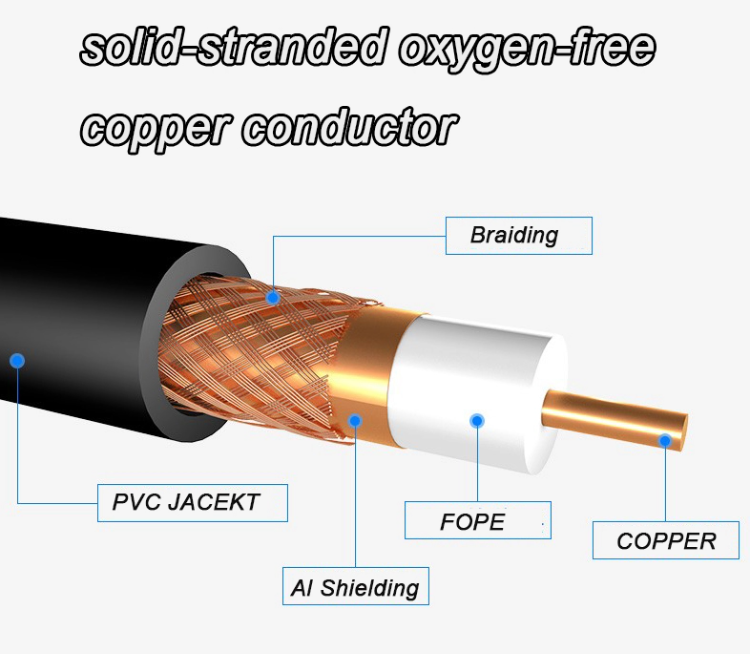
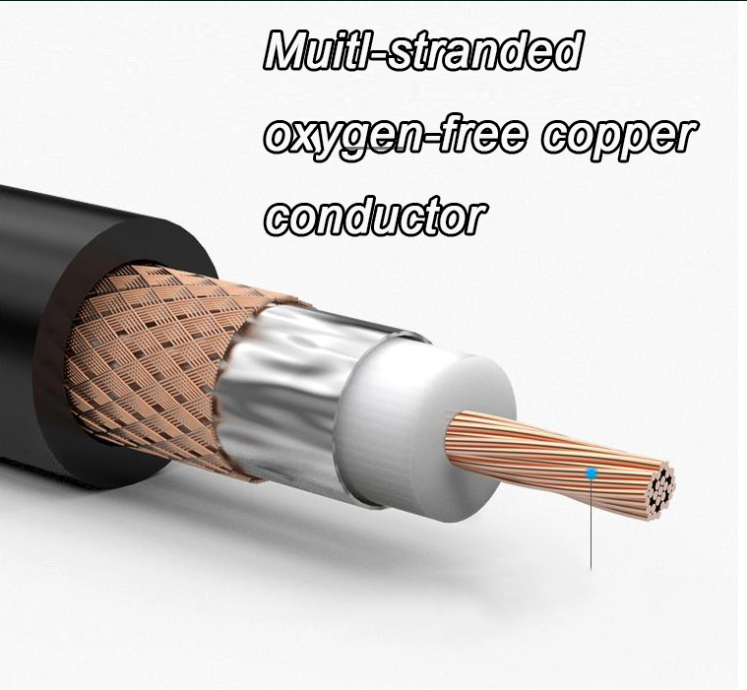
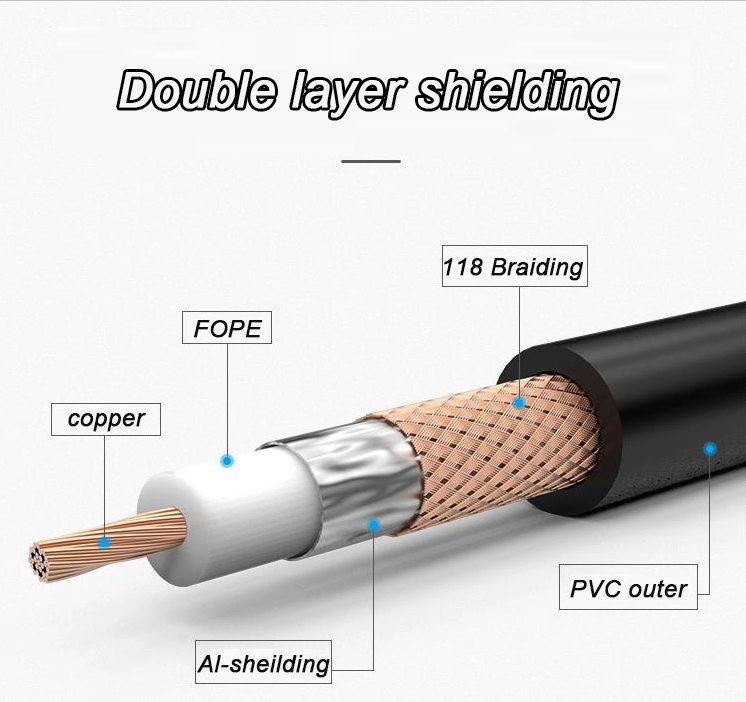
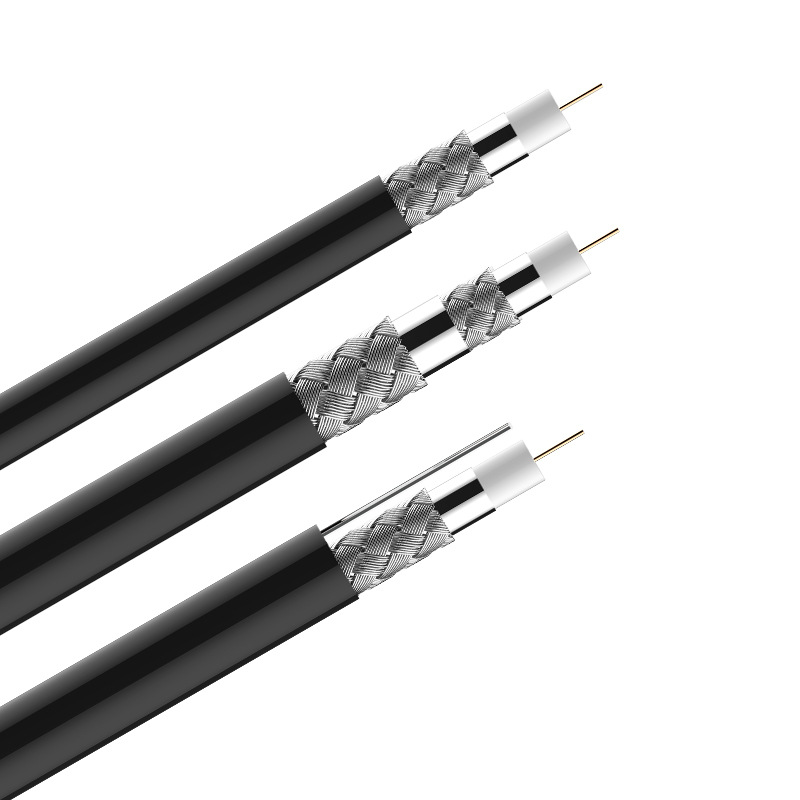
We are a professional manufacturer. We can control your order from the first begining to the last.
2. How can I get a sample to test your quality?
The samples are free for you. New clients are expected to pay for the courier cost.
3. What’s your Minimum Order Quantity?
Normally 100m. However, the cable is very heavy.
You'd better order a suitable quantity to avoid the high freight.
Sea transportation is the best option.
4. Can I get a discount?
It depends on your quantity, We can make a discount and afford the freight. Pls kindly contact us.
5. Does your company accept OEM production?
Yes, we do.




